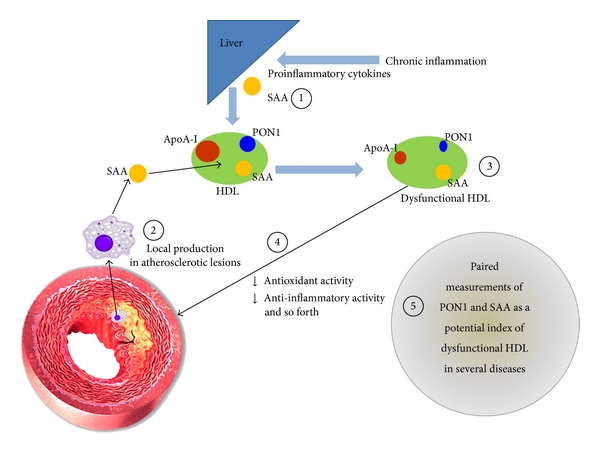Creative Biolabs is a leading service provider that focuses on polyclonal, monoclonal, and recombinant antibody development for research, diagnosis, and potential therapeutics. Based on our extensive experience and state-of-the-art platforms, Creative Biolabs now offers a series of biomarker-specific IVD (in vitro diagnostic) antibody development services to clients globally. Especially, we introduce our IVD antibody development services for serum amyloid A (SAA) marker.
Serum Amyloid A (SAA)
Serum amyloid A (SAA) proteins are a family of apolipoproteins associated with high-density lipoprotein (HDL) in plasma. Different isoforms of SAA are expressed constitutively (constitutive SAAs) at different levels or in response to inflammatory stimuli (acute phase SAAs). These proteins are produced predominantly by the liver. The conservation of these proteins throughout invertebrates and vertebrates suggests that SAAs play a highly essential role in all animals.
Acute-phase serum amyloid A proteins (A-SAAs) are secreted during the acute phase of inflammation. These proteins have several roles, including the transport of cholesterol to the liver for secretion into the bile, the recruitment of immune cells to inflammatory sites, and the induction of enzymes that degrade extracellular matrix. A-SAAs are implicated in several chronic inflammatory diseases, such as amyloidosis, atherosclerosis, and rheumatoid arthritis.
 Fig. 1 A speculative interplay between PON1 and SAA in HDL particles.1,2
Fig. 1 A speculative interplay between PON1 and SAA in HDL particles.1,2
SAA Marker of Sepsis Infections
The systemic inflammatory response to infection involves the release of several mediators, which has led to the suggestion that some of these mediators could be used as markers of sepsis severity. SAA is an acute phase marker that responds rapidly. It is an apolipoprotein that rapidly binds to high-density lipoprotein after their synthesis, influencing cholesterol metabolism during inflammatory states, causing adhesion and chemotaxis of phagocitic cells and lymphocytes. SAA reaches a maximum serum concentration about 24 hours after the inflammatory process sets in and slowly decreasing. Relatively trivial inflammatory stimuli can lead to SAA responses.
Neonatal early-onset sepsis (EOS) in the era of perinatal antibiotic treatment has become an infrequent event but it carries a high risk of mortality and morbidity. Because of the nonspecific signs, the clinical diagnosis of sepsis in neonates is difficult to determine. SAA is shown to be useful in various acute diseases (bacterial, viral, traumatic, rheumatic and ischemic heart disease). SSA is advocated as an inflammatory marker of neonatal early-onset sepsis.
SAA is also an accurate acute-phase protein during late-onset sepsis (LOS) in preterm infants. Quick and reliable SAA kits can make this marker a useful tool in LOS in preterm infants.
IVD Antibody Development Services Targeting SAA Marker
IVD antibodies have been widely used for disease screening and therapeutic monitoring. As a research partner with years of experience in high-quality antibody development and production, Creative Biolabs offers one-stop solutions from antigen design to antibody pair screening. Besides, we also offer diagnostic immunoassay development services, including feasibility analysis, assay design, assay protocol establishment, assay optimization, and kit production. If you are interested in our services, please feel free to contact us for more information and a detailed quote.
References
- Kotani, Kazuhiko, Toshiyuki Yamada, and Alejandro Gugliucci. "Paired measurements of paraoxonase 1 and serum amyloid A as useful disease markers." BioMed Research International 2013.1 (2013): 481437.
- under Open Access license CC BY 3.0, without modification.
For Research Use Only.

